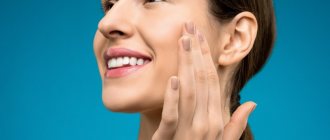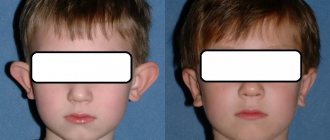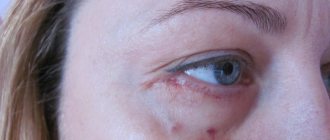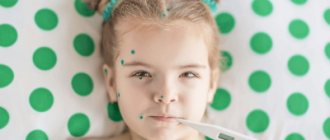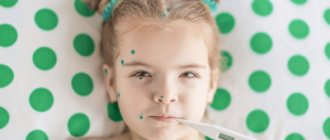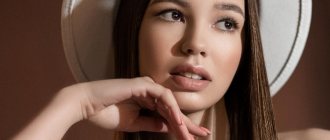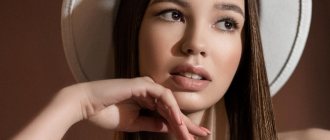Plastic correction of the nose is considered one of the most difficult operations. Despite the complexity of plastic surgery, recovery after rhinoseptoplasty does not differ in any specific features or difficulties. Recommendations for this period are mainly of a general nature for all types of plastic surgery.
The timing and quality of recovery, as well as the final result of the correction, depend not only on the skill of the plastic surgeon. Great responsibility also rests with the patient himself. During the rehabilitation period, the patient must follow all the instructions of his doctor and observe the prohibitions. How aesthetic the correction result will be depends on the patient’s behavior.
What is rhinoseptoplasty?
Classic rhinoplasty corrects only aesthetic defects of the nose. These include:
- hump,
- voluminous or small tip,
- too narrow or wide wings,
- asymmetry and much more.
Unlike rhinoplasty, septoplasty is an operation that is performed for medical, not aesthetic reasons. During septoplasty, a deformed nasal septum is corrected. The septum is deviated as a result of injury or disease, or is a congenital defect. A deviated septum causes breathing difficulties and related problems - snoring, lack of oxygen supply, headaches, constant runny nose, etc.
In plastic surgery, rhinoseptoplasty is a combination of aesthetic and functional rhinoplasty. During the operation, the doctor corrects the septal defect and also models the harmonious features of the nose, eliminating visual imperfections.
Septal splints
Recently, septal splints or intranasal splints have become an integral part of operations on the nasal septum. For septoplasty, rhinoseptoplasty and closure of perforations of the nasal septum, the final stage of the operation is the installation of septal splints on both sides of the nasal septum.
The reason splints are so popular among surgeons is a number of advantages that improve the outcome of the operation, reduce the risks of postoperative complications and speed up the patient’s recovery.
The advantages of septal splints are reflected in the table
| Traditional septoplasty method | Septoplasty using septal splints | |
| Nasal discharge | After the operation, the mucous discharge in the nose and the remaining blood dry up. Crusts form in the nasal cavity, which adhere to the nasal mucosa and are difficult to remove. They also impair breathing and cause severe discomfort in the patient in the postoperative period. | Septal splints cover the entire mucous membrane of the nasal septum and prevent the formation of crusts on the mucous membrane of the nasal septum. And due to the fact that they are made of silicone, all the pathological contents in the nose do not find adhesion and are easily washed off with a nasal shower. |
| Swelling of the mucous membrane | After surgery, the nasal mucosa begins to swell and close the nasal passages due to surgical exposure. Because of this, the patient cannot breathe through his nose, he has to breathe through his mouth, and thus develops dry mouth, etc. | Silicone splints prevent the nasal mucosa from swelling and closing, as they are very flexible and quite elastic. And thanks to special channels, the patient does not have breathing problems after the operation. |
| Adhesions in the nose | Often, upon a second visit to the doctor, the patient is informed about the formation of adhesions in the nose (synechia). The reason for adhesions in the nose is that the mucous membrane of the nasal septum, due to swelling, begins to come into contact with the mucous membrane of the lateral (opposite) wall of the nose, as a result of which they stick together, and the patient faces additional surgery. | Being a barrier between mucous membranes, splints help to avoid this complication. |
| Re-displacement of the septum after surgery | High risk of displacement. | Splints, like a plaster cast, applied to a broken limb, keep the nasal septum strictly in the midline and give it additional support. Thus, splints help to avoid such complications as a secondary displaced nasal septum. |
| Nose bleed | Frequent nosebleeds. | By holding the nasal septum tightly in the midline, the splints compress the vessels and blood does not accumulate between the layers of the nasal septum mucosa. Thus, frequent complications such as nosebleeds or hematoma of the nasal septum do not occur with installed splints. |
| Tamponation | Mandatory packing. Tampons in the nose create additional discomfort. | It is possible to avoid packing of the nasal cavity. Due to this, the rehabilitation period for the patient is easier. But it should still be remembered that only the surgeon decides whether to pack the nasal cavity or not, depending on the circumstances after installing the splints. |
First days
During the day after surgery, the patient must remain in the hospital hospital under the supervision of medical personnel. If the patient feels well, he is discharged from the clinic the next day.
If the patient has no complaints about his health, he can return home the very next day after the operation.
After the operation, the patient is inserted into the nasal passages with silicone splints and a plaster bandage is applied to the face. Unlike turundas, splints have channels for breathing, so the breathing process should not be difficult.
The plaster cast and splints cannot be removed independently. The bandage should also not be moved from its place. The removal of these things is carried out by a surgeon. On average, splints are removed after 5-10 days, the bandage is removed 7-15 days after the intervention.
Main and late recovery period
The main recovery after rhinoplasty occurs within three months. During this period, you can return to an active social life: study, work, hobbies, active recreation. The osteochondral tissue fuses completely, and most of the previously existing restrictions are lifted.
The late rehabilitation period after rhinoplasty is not accompanied by discomfort. There are certain restrictions, but they are few: for example, manual and hardware facial massage cannot be done for at least six months after surgery. Of course, during the rehabilitation year you need to be extremely careful in your home or work environment, during outdoor activities or sports.
It is important to understand that a responsible attitude towards your health and compliance with all recommendations is an indispensable condition for the successful completion of such a complex operation as rhinoplasty.
1-3 weeks after plastic surgery
During the first week, the most pronounced primary edema is observed. Bruising may also occur in the area of intervention, but this does not occur in every patient. Swelling and bruising after rhinoseptoplasty are normal postoperative phenomena; you should not worry about their appearance. The incision sites must be treated with antiseptic agents.
In the second week, the patient can already begin work, provided that it does not involve serious physical activity. During this period, you should sleep only on your back, and also avoid drinking alcohol and smoking cigarettes. In order not to delay swelling, it is advisable to temporarily give up salty and smoked foods or reduce the consumption of such products to a minimum. It is recommended to temporarily limit yourself to hot drinks.
The final result, its preservation and maintenance
The fully formed result of nose surgery will be visible in 6-12 months. At earlier stages of rehabilitation after rhinoplasty, defects (overcorrection or insufficient correction of the nose), if they occurred, become visible. They can be corrected with repeated surgery. According to experts, the probability of revision rhinoplasty is approximately 15%. The result of surgical correction of the shape of the nose, most often, remains forever, less often - unchanged for several decades. You can independently maintain this result in two ways - follow all the doctor’s recommendations for the rehabilitation period and protect your nose and face from injury.
4-6 weeks after surgery
At this time, there is a noticeable improvement in aesthetics. Visible swelling goes away, but secondary swelling remains - it lasts longer than the primary one, but is barely noticeable to others. This period is very important for the rehabilitation process and the formation of the highest quality result, since it is at this time that the key processes of healing and regeneration occur.
For 1-1.5 months after the operation, you cannot play sports or undergo thermal procedures - bathhouse, sauna, hot bath. Solariums and the beach are also prohibited. It is undesirable to wear glasses that put stress on the operated area. During recovery, it is better to replace glasses with lenses or not wear them at all. You should be careful when blowing your nose - do not do it forcefully, so as not to damage the nasal tissue and cause bleeding.
Glasses after nose surgery are undesirable; it is better to replace them with lenses.
Nutrition after rhinoplasty
After plastic surgery on the nose, you should adhere to some dietary restrictions. An important condition for rapid healing is facial rest, so you need to minimize the work of the masticatory muscles. In the first 1-2 weeks after surgery, preference should be given to liquid and semi-liquid foods, which should not be hot. You cannot drink hot tea, coffee, or too cold drinks. It is necessary to reduce the consumption of salt, smoked foods, hot and spicy foods, which retain water in the body and contribute to the appearance of edema.
3-12 months
Visible swelling and bruising are not observed at all at this time. Residual edema may form in the deep tissue structures - this phenomenon is also absolutely normal. Residual edema is completely unnoticeable; its presence can only be indicated by a slightly dense feeling of the tip of the nose.
In most cases, at this stage you can completely return to your normal lifestyle. Nevertheless, it is too early to talk about the final result. Tissues and structures continue to form, and scars at the incision sites also form and fade. The nose gradually takes on its final shape - the way the surgeon and the patient intended them.
During the entire recovery period, you must attend follow-up examinations with your surgeon. In the first 14 days this should be done twice a week, then monthly. You must attend examinations every six months. A year after the operation, a final examination is required, at which the results of the plastic surgery are summed up.
Rhinoplasty: answering questions
Rhinoplasty is one of the most popular plastic surgeries. And one of the first in terms of the number of questions asked. We have collected questions for the week from the social networks of plastic surgeons at the GALAXY Beauty Institute and are sharing with you the answers of our doctors.
How long does swelling last after rhinoplasty?
Everything is individual. Noticeable swelling and bruising disappear within 2-3 weeks. To speed up the rehabilitation process, the GALAXY Beauty Institute offers three free procedures or a paid extended rehabilitation course. (Staisupov V.Yu.)
How to care for your nose after surgery?
Surgeon E.A. Siverina recommends rinsing your nose with saline solution. Each nostril is irrigated separately, the second at this moment is slightly covered with the thumb, the wing of the nose cannot be pressed. The remains of the drug are blown out with an open mouth. The procedure is repeated at least three times a day for 3-4 weeks. To soften the mucous membrane and prevent the formation of crusts after treatment, peach oil is instilled into the nose. If correction of the nasal septum was performed simultaneously with rhinoplasty, rinsing is not performed.
Will the bridge of the nose become wider if the hump is removed?
No, the back width will remain the same because the bones move after the hump is removed. (Staisupov V.Yu.)
Can rhinoplasty be done before the age of 18?
At the GALAXY Beauty Institute, plastic surgery is performed only on adult patients. However, for medical reasons, rhinoplasty can be performed up to 18 years of age. (Staisupov V.Yu.)
Are there any restrictions for ladies over 60?
If the condition of the body allows for surgery, rhinoplasty is not contraindicated. Rehabilitation may take longer because tissues heal less well at this age. (Staisupov V.Yu.)
Is it possible to get your nose pierced after rhinoplasty?
Yes, you can. (Staisupov V.Yu.)
Do I need to wear compression stockings during rhinoplasty and why?
The nose and stockings are not directly related. During the operation, you will spend some time without moving under anesthesia. For diseases of the veins of the lower extremities, in particular varicose veins, thromboembolism prevention is required. If you need such stockings, the GALAXY Beauty Institute will provide them. (Staisupov V.Yu.)
Can I take vitamin C before and after rhinoplasty?
Yes, you can. (Staisupov V.Yu.)
What anesthesia is used for rhinoplasty?
We perform rhinoplasty only under anesthesia (general anesthesia) in order to minimize all discomfort for the patient. (Staisupov V.Yu.)
Is it true that during rhinoplasty the bone in the hump area is broken?
To get rid of the hump, we use an osteotome - a tool for carefully cutting cartilage and bone. (Staisupov V.Yu.)
How long does the operation take?
On average 1.5-2 hours, depending on the complexity of the plastic surgery. We try to avoid unforeseen situations and uncertainty; if necessary, we prescribe additional examinations so that the operation plan does not change during the intervention. (Staisupov V.Yu.)
How long after rhinoplasty can I clean my face (including my nose)?
Ultrasonic cleaning is allowed after 3 weeks, mechanical cleaning - no earlier than after 2 months. (Siverina E.A.)
How will my rehabilitation proceed if I am from another city?
On the first day you will be in the clinic. The cost of a day in the ward is included in the cost of the operation. You need to stay in St. Petersburg for 7-10 days. At first there is a risk of bleeding, sometimes quite severe. In addition, it is better for the attending physician to remove the plaster cast. Removal occurs on 7-10 days. After this you can go home. If the tissue is healing normally, follow-up examinations will be required at 3, 6 and 12 months. At other times, consultations are possible via messengers or Instagram. (Siverina E.A., Staisupov V.Yu.)
Is it possible to correct only the tip of the nose?
Theoretically, yes, if you really only need to fix the tip of the nose. This happens rarely. If the bridge of the nose is wide or there is a hump, limited plastic surgery will make them more massive. Harmony and correct proportions are important. (Siverina E.A.)
How can you see the result of rhinoplasty before surgery?
If desired, we carry out computer modeling, where we correct the nose in the photo according to your wishes. The simulation result is approximate and does not always coincide 100% with the outcome of the operation. (Siverina E.A.)
Will the tip of the nose droop after rhinoplasty?
Over the years, the tip drops a little, just like a nose without plastic surgery. (Safonova L.N.)
How many days does your nose hurt after surgery?
Most patients experience no pain, only discomfort from nasal congestion. (Moshkalova A.L.)
Is it possible to have a nose job during your period?
Blood loss during the operation is insignificant, but rhinoplasty is not performed in the first 3 days of menstruation. (Siverina E.A.)
Will I have problems with passport control after rhinoplasty?
Yes, problems may arise if the shape of the nose is adjusted significantly. It is better to take with you a certificate of the intervention performed or make a passport with a new photo. (Siverina E.A.)
Do enlarged pores remain on the nose after surgery?
Plastic surgery does not affect the structure of the skin of the nose. Cosmetologists will help you get rid of enlarged pores. (Cohen I.A.)
What are the contraindications for rhinoplasty?
A healthy person does not have them. In general, the list is the same for all plastic surgeries. (Cohen A.N.)
How long after a nose job can you kiss?
In 2-3 weeks. If you touch your nose before it heals, it will be very painful. (Staisupov V.Yu.)
Where does excess skin from the tip go when the nose is shortened?
It all depends on the thickness of the skin and the degree of shortening. The skin contracts. In some cases, excess skin is removed by a surgeon. (Staisupov V.Yu.)
What massage do you recommend after nose job?
It is better to refrain from massaging the nose after rhinoplasty so as not to displace its structures. (Staisupov V.Yu.)
Is it possible to have a nose job in winter?
Yes, you can. The operation is carried out year-round. (Staisupov V.Yu.)
How long after a nose job can I go to the solarium?
Not earlier than 5 weeks after surgery. Ultraviolet irradiation and heat dilate blood vessels and can cause bleeding. (Staisupov V.Yu.)
Is thrombophilia a contraindication for rhinoplasty?
Rhinoplasty can be performed for thrombophilia if blood test results are good and only with the permission of a hematologist. (Staisupov V.Yu.)
How much time should pass between rhinoseptoplasty and installation of braces?
The operation can be done even the next day if we are talking about standard bite correction. In case of severe disorders, consultation with an oral and maxillofacial surgeon may be required. (Staisupov V.Yu.)
If adhesions form in the nose after surgery, can you see them yourself?
It is very difficult to see adhesions on your own; if you are worried, consult an ENT specialist. (Staisupov V.Yu.)
What medications are contraindicated before rhinoplasty? Can I take antiviral medications?
Any medications are allowed, except blood thinners (aspirin and its analogues). (Staisupov V.Yu.)
How long after catching a cold and taking antibiotics can I get a nose job?
It takes 10-14 days for the body to recover. After this, the operation is allowed. (Staisupov V.Yu.)
Is it possible to have rhinoplasty in summer? If yes, what precautions should be taken?
The operation is carried out at any time of the year. In the summer, you need to protect your face from the sun: use protective creams and wear a hat. Excessive heat to the skin and ultraviolet light can cause bleeding. (Staisupov V.Yu.)
Is it possible to do rhinoplasty during the healing stage of dental implants?
Yes, it is allowed. (Staisupov V.Yu.)
Is it true that you can’t get pregnant for a year after rhinoplasty? Why?
It is better to refrain from pregnancy for six months to a year after surgery. Bearing a child is a serious process, accompanied by changes in hormonal levels and water-salt metabolism. Many women experience swelling. Rhinoplasty will not affect the pregnancy itself, but the result of plastic surgery may become slightly worse. (Staisupov V.Yu.)
How to speed up rehabilitation?
To ensure that recovery after rhinoseptoplasty occurs as quickly and efficiently as possible, it is first of all important to follow all the instructions of the plastic surgeon. At this time, everything depends only on the behavior of the patient himself. If the operation was carried out brilliantly, but the patient violated the rules of rehabilitation, the final result may differ from what was planned, not for the better.
Various methods are used to help tissue heal faster. Various drugs that have anti-edematous and anti-inflammatory effects can help - for example, Traumeel. Some physical procedures are also effective. It is important to understand that self-prescribing medications or procedures is strictly prohibited. Any actions must be previously agreed with the plastic surgeon. You should only use medications or attend physical therapy with your doctor's approval.
What factors can increase the risk of poor rhinoplasty performance?
- Most often, we are talking about the wrong choice of a specialist who incorrectly assesses the risks of complications after rhinoplasty. Rhinoplasty is a very attractive operation from a financial point of view. Besides, from the outside it doesn't seem that complicated. As a result, very often nose surgery is undertaken by low-skilled specialists who do not have sufficient experience in assessing the consequences of rhinoplasty. The result of unprofessional intervention is disastrous.
- The period of rhinoplasty after surgery is no less important than the operation itself. And it is extremely important for the patient to follow all the recommendations given by the surgeon at this time. If the recommendations for rhinoplasty after surgery are not followed, complications will not be long in coming.
- Individual characteristics are also important. This is especially true for the nature of scarring, which is different for each organism. This can also cause complications and consequences of rhinoplasty.
We should not forget that in approximately one case out of three, in the first days after rhinoplasty, certain unforeseen changes may occur, the statistical probability of which cannot be excluded. In most cases, they are not significant, and many experts simply refuse to recognize them as complications after rhinoplasty as such. And yet the fact remains. If unexpected changes occur, additional light correctional plastic surgery may be required, which is often done even without general anesthesia.
Statistics show that the overall likelihood of complications after rhinoplasty is 4-18.8 percent. Only an experienced doctor can minimize the occurrence of operational troubles. His skill in performing the operation, with the correct choice of the optimal technique and assessment of the condition of the nose after rhinoplasty, will give a high-quality result.
